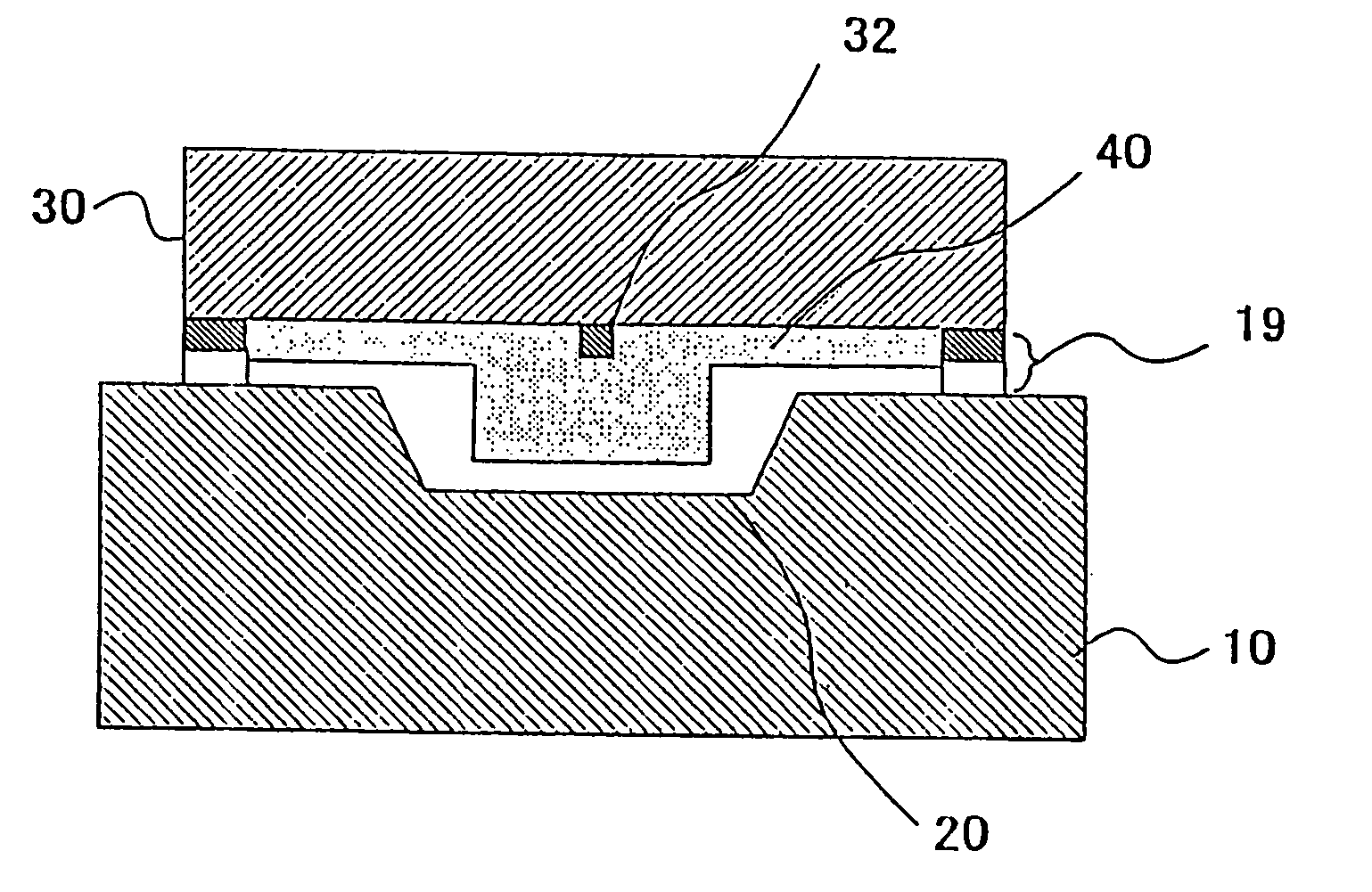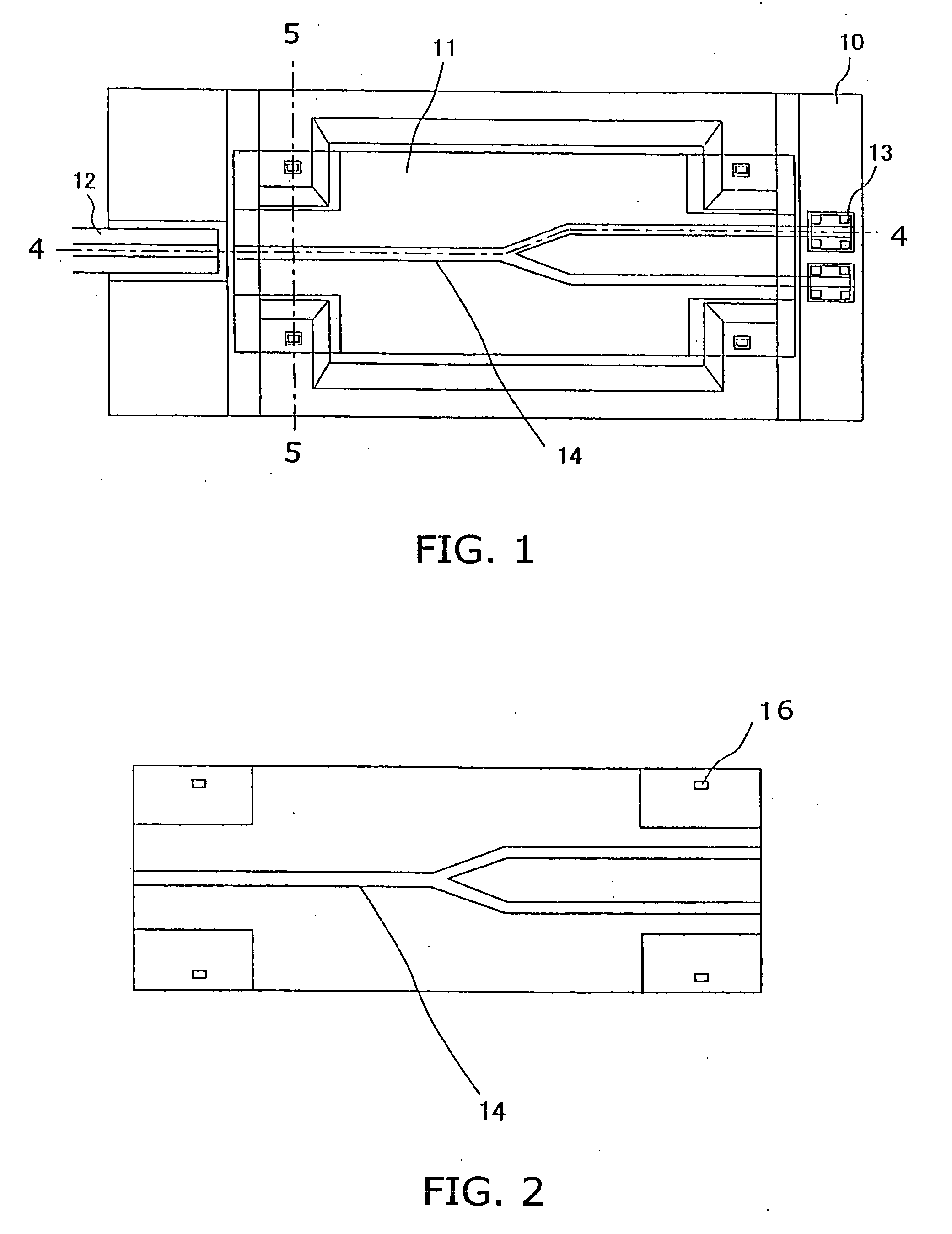Process for making light waveguide element
a technology of light waveguide and element, which is applied in the direction of optical waveguide light guide, instruments, optics, etc., can solve the problems of low production efficiency of conventional process, reduced yield, and difficulty in making etching stable, so as to minimize the variation of film thickness within the wafer, precise vertical optical axis alignment, and precise control of film thickness
- Summary
- Abstract
- Description
- Claims
- Application Information
AI Technical Summary
Benefits of technology
Problems solved by technology
Method used
Image
Examples
second embodiment
[0034] In FIG. 8(a), a core 32 and the first height-adjusting layer 33 are formed on the lower clad layer or substrate 30, and an etching stopper film 34 is formed on the first height-adjusting layer 33. The thickness of each of the core 32 and the first height-adjusting layer 33 is 5.0 μm. The etching stopper film 34 also works as a marker for matching the optical axis in the direction of a plane on which the light waveguide element is mounted.
[0035] In FIG. 8(b), the first upper clad layer or quartz film 36 having a thickness of 10 μm is formed and, then, an etching mask 38 is formed to cover the area above the core 32. Then, the portion of the first upper clad layer 36 other than the area covered by the etching mask 38 is etched off. It is continued until at least the etching stopper film 34 is exposed as shown in FIG. 8(c).
[0036] In FIG. 8(d), photolithography and etching are employed to remove the etching mask 38.
[0037] In FIG. 8(e), the second upper clad layer or quartz fil...
third embodiment
[0040] In FIG. 10(a), a core film 31 is formed on a lower clad layer or substrate 30, and an etching stopper film 34, which also serves as horizontal optical axis-matching markers, and a core pattern-forming etching mask 35 are formed on the core film 31. The thickness of the core film 31 is made 5.0 μm.
[0041] In FIG. 10(b), the first upper clad layer or quartz film 36 having a thickness of 6.5 μm is formed and, then, a marker-etching mask 37 is formed so as to cover the area above the etching stopper film 34. Then, the portion of the first upper clad layer 36 and the core film 31 other than the area covered by the marker-etching mask 37 are etched off. It is continued until at least the portion of the core film 31 is removed as shown in FIG. 10(c).
[0042] In FIG. 10(d), photolithography and etching are used to remove only the etching mask 35 from the core 32 and, then, the second upper clad layer or quartz film 40 having a thickness of 15 μm is formed.
[0043] In FIG. 10(e), an etc...
PUM
 Login to View More
Login to View More Abstract
Description
Claims
Application Information
 Login to View More
Login to View More - R&D
- Intellectual Property
- Life Sciences
- Materials
- Tech Scout
- Unparalleled Data Quality
- Higher Quality Content
- 60% Fewer Hallucinations
Browse by: Latest US Patents, China's latest patents, Technical Efficacy Thesaurus, Application Domain, Technology Topic, Popular Technical Reports.
© 2025 PatSnap. All rights reserved.Legal|Privacy policy|Modern Slavery Act Transparency Statement|Sitemap|About US| Contact US: help@patsnap.com



